Do you have a question about the Panasonic MZ2000G Series and is the answer not in the manual?
Information on the 'Space Tune' function for automatic sound quality adjustment based on room acoustics.
Instructions to prevent static image burn-in and protect the display panel from damage.
Panasonic's non-responsibility for malfunctions due to misuse, data loss, or external device issues.
Details on collection of IP addresses and personal information for service integrity and protection.
Warnings and instructions for safe handling of the power plug and cable to prevent shock or fire.
Precautions to prevent TV from falling, causing injury or damage, especially to children.
Warnings about packaging and small parts posing suffocation or choking risks to young children.
Guidelines for safely installing and using the TV pedestal, including warnings against modification.
Precautions regarding radio wave interference with medical equipment, automatic controls, and pacemakers.
Cautions for using built-in wireless LAN and Bluetooth to avoid interference and unauthorized access.
Instructions for ensuring adequate ventilation around the TV to prevent overheating and component failure.
Guidelines for safely moving the TV, emphasizing the need for two people and proper handling.
Cautions on TV usage conditions, excessive volume, and safe handling and disposal of remote control batteries.
Guidance on purchasing and safely installing the recommended wall-hanging bracket.
Instructions for basic AV device and aerial connections, including special notices for digital terrestrial services.
Details on connecting 4K/HDR devices, including HDMI auto settings for optimal image reproduction.
Instructions for connecting DVD players, camcorders, game equipment, headphones, and USB HDDs.
Information on pairing Bluetooth audio devices that support A2DP with the TV.
Procedure for pairing the TV remote control via Bluetooth or infrared for voice control functionality.
Identification of buttons and functions on the remote control for TV operation.
Explanation of how to use voice controls for TV operations and selecting voice services.
Detailed steps on how to use voice commands to control the TV and its features.
Identification of indicator lights and control buttons on the rear side of the TV.
Instructions for performing panel maintenance to ensure display longevity and performance.
Step-by-step guide for initial TV setup, including channel tuning and environment selection.
Guidance on selecting language, country, viewing environment, and network setup for initial use.
Solutions to common problems regarding image display, power, remote control, and image issues.
Solutions for external equipment issues, sound problems, voice control, panel movement, and LED status.
Instructions for regular cleaning and care of the display panel, cabinet, and pedestal to prevent damage.
Guidance on cleaning the mains plug to prevent fire or electrical shock hazards.
Detailed technical specifications including model, power, display, sound, and connection terminals.
Information on Ethernet, USB, digital audio, receiving systems, wireless LAN, and Bluetooth standards.
Specifications for the operating temperature and humidity range for the TV.
Information on the 'Space Tune' function for automatic sound quality adjustment based on room acoustics.
Instructions to prevent static image burn-in and protect the display panel from damage.
Panasonic's non-responsibility for malfunctions due to misuse, data loss, or external device issues.
Details on collection of IP addresses and personal information for service integrity and protection.
Warnings and instructions for safe handling of the power plug and cable to prevent shock or fire.
Precautions to prevent TV from falling, causing injury or damage, especially to children.
Warnings about packaging and small parts posing suffocation or choking risks to young children.
Guidelines for safely installing and using the TV pedestal, including warnings against modification.
Precautions regarding radio wave interference with medical equipment, automatic controls, and pacemakers.
Cautions for using built-in wireless LAN and Bluetooth to avoid interference and unauthorized access.
Instructions for ensuring adequate ventilation around the TV to prevent overheating and component failure.
Guidelines for safely moving the TV, emphasizing the need for two people and proper handling.
Cautions on TV usage conditions, excessive volume, and safe handling and disposal of remote control batteries.
Guidance on purchasing and safely installing the recommended wall-hanging bracket.
Instructions for basic AV device and aerial connections, including special notices for digital terrestrial services.
Details on connecting 4K/HDR devices, including HDMI auto settings for optimal image reproduction.
Instructions for connecting DVD players, camcorders, game equipment, headphones, and USB HDDs.
Information on pairing Bluetooth audio devices that support A2DP with the TV.
Procedure for pairing the TV remote control via Bluetooth or infrared for voice control functionality.
Identification of buttons and functions on the remote control for TV operation.
Explanation of how to use voice controls for TV operations and selecting voice services.
Detailed steps on how to use voice commands to control the TV and its features.
Identification of indicator lights and control buttons on the rear side of the TV.
Instructions for performing panel maintenance to ensure display longevity and performance.
Step-by-step guide for initial TV setup, including channel tuning and environment selection.
Guidance on selecting language, country, viewing environment, and network setup for initial use.
Solutions to common problems regarding image display, power, remote control, and image issues.
Solutions for external equipment issues, sound problems, voice control, panel movement, and LED status.
Instructions for regular cleaning and care of the display panel, cabinet, and pedestal to prevent damage.
Guidance on cleaning the mains plug to prevent fire or electrical shock hazards.
Detailed technical specifications including model, power, display, sound, and connection terminals.
Information on Ethernet, USB, digital audio, receiving systems, wireless LAN, and Bluetooth standards.
Specifications for the operating temperature and humidity range for the TV.
| Display Type | OLED |
|---|---|
| Operating System | My Home Screen 8.0 |
| USB Ports | 3 |
| Bluetooth | Yes |
| Wi-Fi | Yes |
| Ethernet | Yes |
| Dolby Atmos | Yes |
| Refresh Rate | 120 Hz |
| Screen Size | 55", 65", 77" |
| Resolution | 3840 x 2160 (4K UHD) |
| HDR Support | HDR10+, Dolby Vision, HLG |
| Processor | HCX Pro AI |
| HDMI | HDMI 2.1 |
| Audio Output | Optical, HDMI ARC |
| Dimensions (Without Stand) | Varies by screen size |
| Weight (Without Stand) | Varies by screen size |
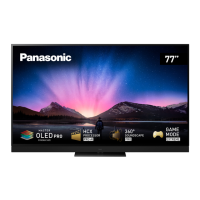

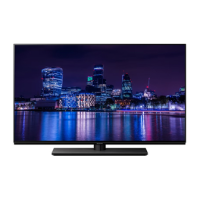


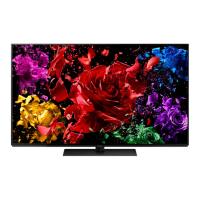
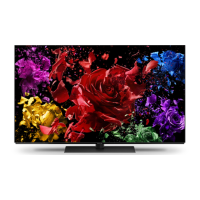
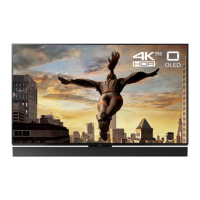

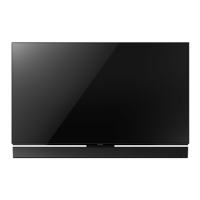


